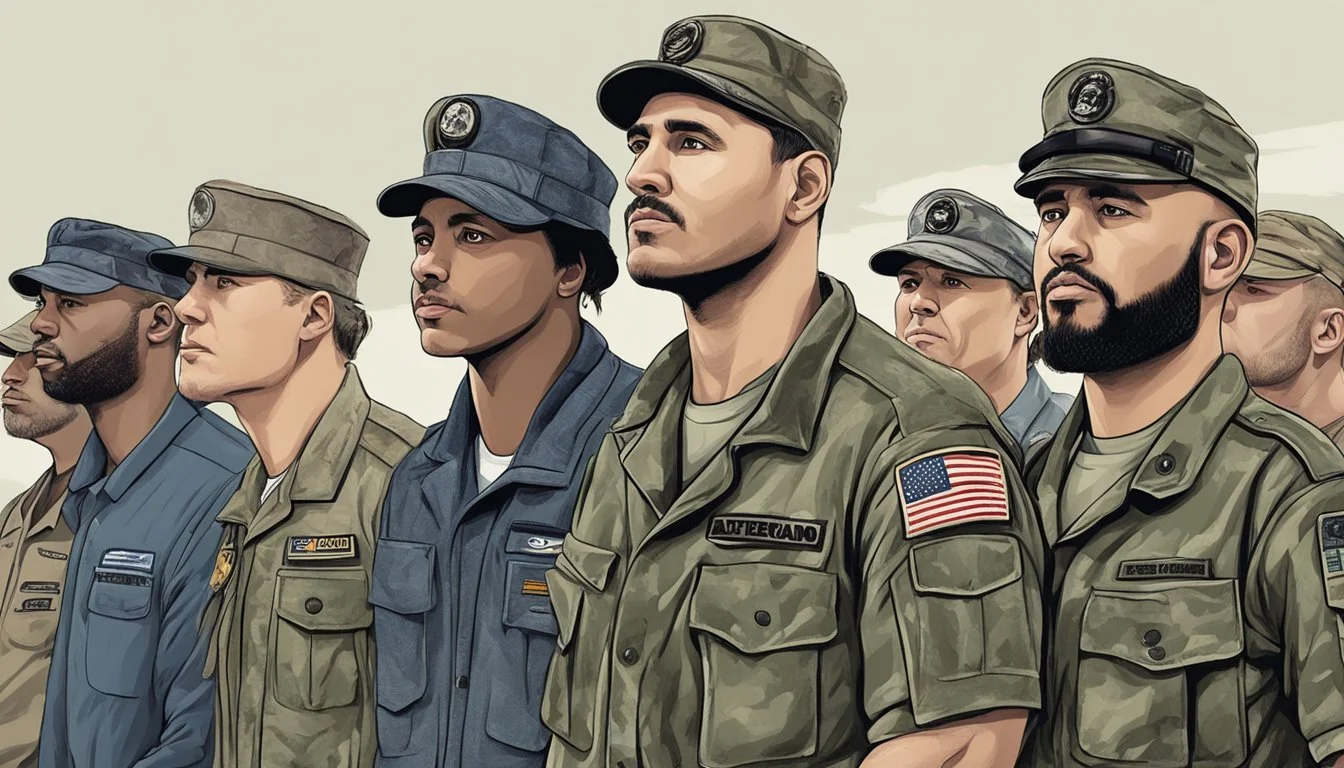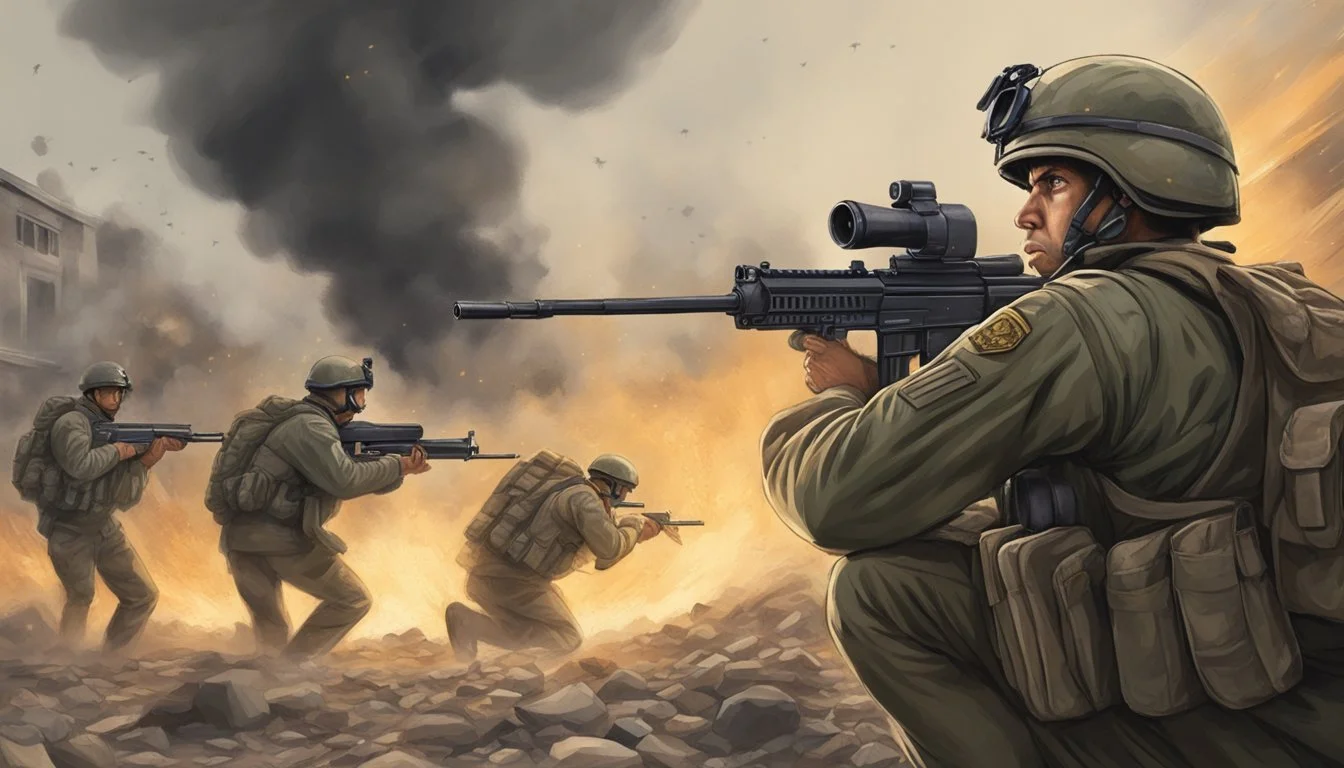9 Common Myths About PTSD in Veterans
Debunking Misconceptions
Post-traumatic stress disorder (PTSD) in veterans is a critical mental health issue that affects many who have served in the military. While it is often associated with combat, PTSD can result from various traumatic experiences, both during and outside of military service. Understanding these myths is essential for providing accurate information and support to those affected.
Veterans returning from duty may face numerous challenges as they reintegrate into civilian life. Misconceptions about PTSD can lead to stigmatization and hinder individuals from seeking much-needed help. Dispelling these myths is a step towards fostering a more supportive environment for all veterans.
1) PTSD always leads to violent behavior
A common myth is that PTSD always results in violent behavior. This belief is not supported by research. Studies indicate that not all individuals with PTSD display violent tendencies.
Violence is often associated with other factors such as substance abuse or personal history. PTSD alone is not a definitive predictor of violent behavior.
Findings from the National Center for PTSD show varying prevalence rates of violence among those with PTSD, but this does not support the notion that all sufferers are violent.
It is important to distinguish between aggressive thoughts and actual violent actions. Many veterans with PTSD experience intrusive thoughts but do not act on them.
Mental health professionals emphasize that treatment and support can help manage these symptoms. Understanding the actual behavior patterns of individuals with PTSD can help in dispelling myths surrounding the disorder and violence.
2) All veterans with PTSD are unemployable
This myth suggests that veterans with PTSD cannot hold a job. In reality, many veterans with PTSD manage successful careers.
PTSD symptoms vary widely. Some individuals may experience severe symptoms making employment difficult, yet many others effectively manage their symptoms with therapy and medication.
Veterans bring unique skills to the workforce. Many employers value their discipline, teamwork, and leadership abilities. Programs and resources are available to help veterans transition into civilian employment.
A study by the Cohen Veterans Network highlights that PTSD is not a sign of weakness and reminds us that it is a treatable condition. Adaptations and accommodations in the workplace can support those with PTSD.
The Department of Veterans Affairs provides resources for veterans dealing with mental health conditions. For instance, the VA offers support to those whose PTSD significantly impairs their ability to work, but this is not the norm for all veterans with PTSD.
3) PTSD only affects combat veterans
PTSD is often associated with combat veterans, but it can affect anyone who experiences or witnesses traumatic events. This misconception exists due to the visibility of veterans' experiences, yet it's not exclusive to them.
Individuals outside of military service may also suffer from PTSD. People who endure car accidents, natural disasters, or violent assaults can develop this condition.
Even within the military, not all PTSD cases are combat-related. Events like training accidents or exposure to toxic substances can also lead to PTSD. Sexual assault or harassment in the military is another source of trauma that can result in PTSD.
Veterans from non-combat roles also face PTSD. Medical personnel, for example, encounter significant trauma by treating severely injured soldiers, which can lead to PTSD.
There’s a diverse range of potential triggers for PTSD. This highlights the importance of not limiting recognition or treatment to combat veterans alone. Anyone exposed to severe trauma, regardless of their background, risks developing PTSD.
For further reading on this topic, visit Emory Healthcare on PTSD. This wider understanding is crucial for broader support and more effective treatment strategies for all affected individuals.
4) Talking about experiences makes PTSD worse
One common myth about PTSD is that discussing traumatic experiences can exacerbate symptoms. This misconception might stem from a fear that revisiting painful memories will intensify emotional distress.
In reality, talking about trauma can be a critical part of the healing process. Various therapeutic approaches, such as cognitive-behavioral therapy (CBT) and eye movement desensitization and reprocessing (EMDR), involve discussing and processing traumatic events. These methods aim to reduce the power that these memories hold over an individual.
Avoiding conversations about trauma can contribute to a sense of isolation and prolong recovery. It can prevent individuals from receiving the support they need and hinder the development of coping strategies.
Educating people on the benefits of open dialogue about PTSD can help dispel this myth. For more information, see 5 Common Myths About PTSD and Myths About PTSD And How To Address Them. Understanding that structured and supportive conversations can aid in trauma recovery is crucial for those affected by PTSD.
5) Medication is the only treatment option
A common myth is that medication is the only way to treat PTSD. In reality, several effective treatment options exist.
Trauma-focused psychotherapies rank as primary treatments over medications for PTSD. These therapies include Cognitive Processing Therapy (CPT) and Prolonged Exposure (PE) therapy.
Medications may be beneficial when these therapies are unavailable or impractical. Some veterans may find a combination of treatments works best for their symptoms.
Healthcare providers collaborate with patients to choose the most suitable treatment. This decision considers benefits, risks, side effects, and personal preferences.
For more detailed information on treatment options, visit the National Center for PTSD.
6) PTSD is a Sign of Weakness
The belief that post-traumatic stress disorder (PTSD) is a sign of weakness is a common myth. This misconception can prevent many from seeking help. PTSD is a mental health condition triggered by experiencing or witnessing a traumatic event.
The disorder affects people from all walks of life, not just veterans. The idea that PTSD indicates weakness overlooks the psychological complexities involved in trauma response. Exposure to trauma can affect anyone, regardless of their strength or resilience.
Many individuals with PTSD demonstrate significant courage in their daily lives, coping with symptoms like flashbacks, anxiety, and depression. Getting professional treatment involves considerable bravery.
Treatment for PTSD, including therapy and medication, has proven effective for many. This misconception can discourage those in need from seeking support, hampering recovery.
For more information on PTSD myths, visit Everyday Health and The Recovery Village.
7) Female veterans don’t experience PTSD
It is a myth that female veterans don’t experience PTSD. Women make up a growing portion of the military, and their experiences in service can lead to traumatic stress just as their male counterparts. Female veterans face unique challenges such as combat exposure and sexual harassment, which significantly contribute to PTSD rates.
Research has shown that women veterans have high rates of PTSD. Their experiences often include sexual assault and harassment, both of which are critical factors in the development of PTSD. This is detailed in the National Center for PTSD report on women and trauma.
Statistics reveal that female veterans are just as susceptible to PTSD as male veterans. Mental health studies have highlighted the need for specialized interventions to address the symptoms in women specifically. Women veterans often experience barriers to accessing care, a factor that worsens their PTSD symptoms.
Comprehensive understanding of PTSD in female veterans helps in developing effective treatments. Addressing the specific triggers and symptoms in women is essential for proper mental health support. For more information, the Wounded Warrior Project provides an insightful look into the trauma faced by female veterans.
8) PTSD symptoms appear immediately after trauma
A common myth about PTSD is that its symptoms manifest right after a traumatic event. This is not accurate. While some individuals may exhibit symptoms within the first three months, it is not uncommon for signs of PTSD to appear months or even years later.
PTSD doesn't follow a standardized timeline. Each person's response to trauma is unique. Some might experience symptoms sporadically, whereas others might have prolonged periods without any signs before they resurface.
Additionally, the nature of the trauma can influence how and when symptoms appear. The complexity of PTSD means that the onset varies greatly among those affected.
9) Veterans with PTSD can’t lead normal lives
Many believe that veterans with PTSD cannot lead normal lives. This is simply not true.
With proper treatment, many veterans manage their symptoms effectively and lead fulfilling lives. Therapy, medication, and support groups play crucial roles in helping them cope.
PTSD does not define a person. Veterans continue to contribute to society in meaningful ways.
They work, volunteer, and engage in social activities just like anyone else. Their experiences may shape them, but they are fully capable of achieving their goals.
The key is access to the right resources and support. Organizations and healthcare providers continuously work to improve these services.
Stigma around PTSD can be harmful. It is important to understand that with the right help, veterans can thrive.
Coverage through reputable healthcare services, like those discussed on Emory Healthcare, shows multiple paths for veterans to lead successful lives after trauma.
Education and awareness about PTSD help debunk myths, opening doors for veterans to access the help they need.
Understanding PTSD
Posttraumatic stress disorder (PTSD) can affect anyone who has experienced a traumatic event. Symptoms vary but often cause significant disruptions in daily life.
Definition and Symptoms
PTSD arises from experiencing or witnessing traumatic events like combat, natural disasters, or severe accidents. It is characterized by persistent mental and emotional distress. Key symptoms include flashbacks, nightmares, severe anxiety, and uncontrollable thoughts about the event.
Symptoms are classified into four types: intrusive memories, avoidance, negative changes in cognition and mood, and changes in physical and emotional reactions. Intrusive memories involve reliving the trauma, while avoidance means steering clear of reminders. Negative changes might include detachment from family and a lack of interest in activities once enjoyed. Lastly, physical and emotional reactions involve irritability, aggression, or being easily startled.
Causes in Veterans
Veterans are at a higher risk for PTSD due to their exposure to combat and other stressful military experiences. Mental health issues often arise from witnessing death, experiencing life-threatening situations, or enduring captivity or torture. The constant state of alertness and danger in combat zones significantly affects their psychological well-being.
Training accidents, exposure to toxic substances, and incidents of sexual assault or harassment also contribute. For example, veterans may experience PTSD from non-combat traumatic events like accidents during training or military sexual trauma. The increased rates among veterans, especially female veterans, indicate the broad scope of potential causes that extend beyond the battlefield.
Debunking Myths About PTSD
Veterans face many misconceptions about Post-Traumatic Stress Disorder (PTSD). Misunderstandings can lead to stigma and misinformation, affecting the support and treatment they receive.
Myth: Veterans with PTSD are Violent
Contrary to popular belief, most veterans with PTSD are not violent. Media portrayal often emphasizes extreme cases, but these are not representative of the majority. Veterans with PTSD can experience symptoms like flashbacks, anxiety, and hypervigilance, but these do not typically result in violent behavior.
Studies show that PTSD can manifest in various ways, including emotional numbness and avoidance of triggers. Mislabeling veterans as violent can deter them from seeking help. Awareness and education are crucial for providing appropriate support and reducing stigma.
Myth: PTSD Only Affects Combat Veterans
It is a common misconception that only combat veterans suffer from PTSD. In reality, PTSD can result from various traumatic experiences, not just combat. Non-combat-related traumas include training accidents, military sexual trauma, and exposure to toxic substances.
Research highlights that any traumatic event can trigger PTSD symptoms. For instance, veterans exposed to harassment or those injured during non-combat missions can also develop PTSD. Acknowledging this broad range helps to ensure that all affected veterans receive the assistance and validation they need.
Understanding these myths fosters a better environment for veterans, encouraging them to seek treatment without fear of judgment or misunderstanding.
Treatment Options for PTSD in Veterans
Veterans have several effective treatment options for PTSD, including therapy and counseling, as well as medication. The Veterans Affairs (VA) system offers a range of evidence-based treatments to address the diverse needs of service members.
Therapy and Counseling
Therapy and counseling, often referred to as "talk therapy," are primary treatments for PTSD in veterans. Cognitive Behavioral Therapy (CBT) and Eye Movement Desensitization and Reprocessing (EMDR) are widely recognized for their effectiveness.
CBT helps patients reframe negative thought patterns related to trauma, while EMDR uses guided eye movements to process and integrate traumatic memories. Veterans can participate in individual or group therapy sessions, depending on their preferences and needs. VA healthcare providers work collaboratively with veterans to determine the most suitable therapeutic approaches, ensuring personalized care.
Medication
Medications are another cornerstone in the treatment of PTSD for veterans. Selective Serotonin Reuptake Inhibitors (SSRIs) and Serotonin-Norepinephrine Reuptake Inhibitors (SNRIs) are commonly prescribed to help manage symptoms such as anxiety and depression.
These medications can significantly reduce PTSD symptoms, allowing veterans to maintain better overall functioning. It's important for patients to discuss potential side effects and benefits with their healthcare providers. Finding the right medication may require time and adjustments, but the potential for symptom relief can greatly enhance quality of life. Combining medication with therapy often yields the best results, addressing both psychological and physiological aspects of PTSD.







